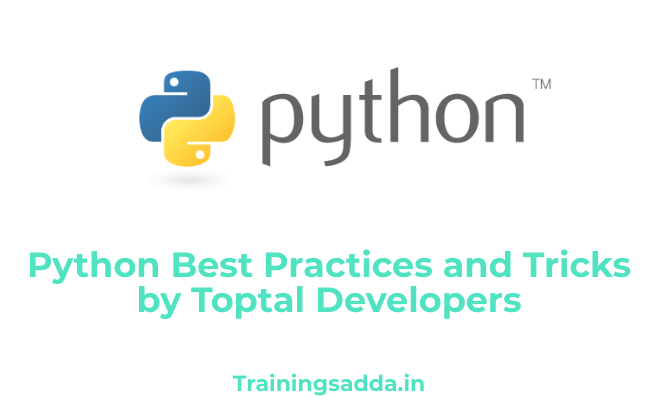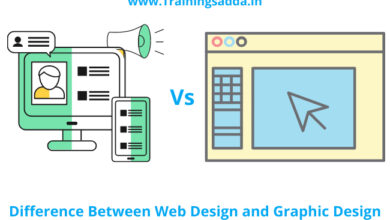Python Best Practices and Tricks by Toptal Developers

Table of Contents
What is Python?
Python is a high-level programming language with dynamic binding and dynamic typing. I would portray it as an incredible, high-level dynamic language. Numerous developers are enamored with Pythondue to its reasonable syntax, well-organized packages and plugins, and for its tremendous adaptability and scope of current highlights.
In Python web development, nothing obliges you to compose classes and startup objects from them. If you needn’t bother with complex structures in your project, you can simply write the functions. Surprisingly better, you can write a level script for executing some basic and fast tasks without organizing the code by any means. Simultaneously Python is a 100 percent object-oriented language.
Read more: Mistakes to Avoid in Drupal Web Design & Development
In this way, you can write basic scripts in Python, or simply open the Python terminal and execute statements in that spot (that is so valuable!). And yet, you can make complex systems, applications, libraries, etc. while Python web development is so adaptable and powerful, we need a few rules (or examples) when programming in it. Along these lines, let see what patterns are, and how they identify with Python.
Reason to utilize Patterns in Python
Any programming language is useful for patterns. Indeed, patterns ought to be considered with regard to some random programming language. Both the patterns, language syntax, and nature impose restrictions on our programming. The restrictions that originate from the language nature and language syntax (functional, dynamic, object-oriented, and so forth) can contrast, as can the explanations for their reality.
Learn more: Angular.js: Best Framework for Mobile and Web Application Development
Python’s way of thinking is based overall around considered best practices. Python is a powerful language and in that capacity, already implements, or makes it simple to actualize, various famous design patterns with a couple of lines of code. Some design patterns are incorporated with Python, so we use them even without knowing. Different patterns are not required due to the idea of the language.
Python Design Patterns:
What Is A Design Pattern?
Everything begins with the Gang of Four (GOF). Do a snappy online search if you are curious about the GOF.
- Design patterns are a typical method for solving surely understood issues. Two primary standards are in the bases of the design patterns characterized by the GOF:
- Program to an interface, not an implementation.
- Support object composition over legacy.
We should investigate these two principles from the point of view of Python software programmers.
Read more: What is The Career Scope for Android App Development in India?
Program to an interface but not an implementation
Consider Duck Typing. In Python, we don’t prefer to characterize interfaces and program classes agreeing on these interfaces. However, hear me out! This doesn’t mean we don’t consider interfaces, in actuality with Duck Typing we do that constantly.
Support object composition over inheritance
Presently, that is the thing that I call a Pythonic principle! I have made fewer classes/subclasses contrasted with wrapping one class in another class. The points of interest are self-evident. We can confine what strategies for the wrapped class to uncover. We can infuse the persister instance in runtime! For instance, today it’s a social database, yet tomorrow it could be whatever, with the interface we need.
Behavioral patterns
Behavioral patterns include communication between objects, how objects interface and satisfy a given task. As indicated by GOF standards, there are some behavioral patterns in Python: Chain of Responsibility, Iterator, Mediator, Command, Interpreter, Memento, Observer, State, Template, Strategy, Visitor.
Iterator
Iterators are incorporated with Python. This is one of the most dominant attributes of the language.
Chain of Responsibility
This pattern gives us an approach to treat a request utilizing various strategies, every one tending to a particular piece of the request. You know, probably the best guideline for good code is the Single Responsibility Principle.
Command
This is one of the primary Python design patterns I actualized as a software programmer.
Learn more: Useful UI and UX Tools and Resources for Designers
The command pattern is convenient in circumstances when, for reasons unknown, we have to begin by getting ready what will be executed and afterward to execute it when required. The benefit is that typifying activities in such a manner empowers Python developers to add extra functionalities identified with the executed activities, for example, undo/redo, or keeping a background marked by activities and so forth.

Creational Patterns
We should begin by pointing out that creational patterns are not usually utilized in Python. It implies that the language itself furnishes us with all the adaptability we have to make objects in an adequately exquisite manner; we need to actualize anything on top, similar to Singleton or Factory.
Singleton
The Singleton pattern is utilized when we need to ensure that just one occurrence of a given class exists during runtime.
Dependency Injection
I don’t plan to get into a discourse on whether the dependency injection is a design pattern, however, I will say that it’s an excellent system of executing loose couplings. It’s a pleasant clarification of dependency injection and gives us a smart thought of the capability of this specific method.
Learn more: What is The Future Scope of Hadoop Technology?
Structural Patterns
Facade
This might just be the most acclaimed Python design pattern. Envision you have a framework with an extensive number of objects. Each object is offering a rich set of API techniques.
Adapter
If Facades are utilized for interface simplification, Adapters are tied in with changing the interface. Like utilizing dairy animals when the system is anticipating a duck.
Decorator
Decorators are extremely decent, and we already have them incorporated into the language. The decorator pattern is tied in with presenting extra functionality and specifically, doing it without utilizing legacy. It isn’t so much that we don’t need to be cognizant about best practices (and configuration designs, specifically), however with Python, I have an inclination that I’m following prescribed procedures, in any case.
Note that you are not restricted to functions as decorators. A decorator may include whole classes. The main necessity is that they should be callables.
Read more: How to Become a Java developer?
Conclusion
“Basic is superior to anything complex,” remember that? Possibly you have seen that none of the design patterns is completely and officially depicted. No complex full-scale executions have appeared. You have to “feel” and execute them in a way that best accommodates your style and needs. Python web development is an extraordinary language and it gives all of you the power you have to create adaptable and reusable code.
Author Bio:
Hermit Chawla is a Marketing Manager at AIS Technolabs which is Web design and Development Company, helping global businesses to grow. I would love to share thoughts on python django developer.
Comments
0 comments




